Pyorrhea
Pyorrhea, also known as periodontitis, is a severe gum disease that affects the tissues and bone supporting the teeth. It usually begins as gingivitis, characterized by inflammation and bleeding of the gums. If left untreated, gingivitis can progress to pyorrhea, where the infection spreads deeper into the gums, causing the gums to pull away from the teeth, creating pockets that become infected. Over time, this condition can lead to the destruction of the bone and connective tissues, resulting in tooth loss if not treated promptly.
The primary cause of pyorrhea is the buildup of plaque and tartar on the teeth, which harbor harmful bacteria. These bacteria release toxins that irritate the gums and trigger an inflammatory response. Other factors such as smoking, poor oral hygiene, genetic predisposition, and underlying health conditions like diabetes can increase the risk of developing pyorrhea. Early symptoms may include swollen or bleeding gums, bad breath, and loose teeth. In advanced stages, pus discharge from the gums, receding gums, and significant bone loss may occur.
Treatment for pyorrhea focuses on eliminating the infection and halting the progression of the disease. In the early stages, improving oral hygiene with regular brushing, flossing, and professional cleanings may help. For more severe cases, periodontal treatments such as scaling and root planing (deep cleaning to remove plaque and tartar beneath the gums) are necessary. In some cases, surgery might be required to restore the damaged gum and bone structure. Antibiotics may also be prescribed to control the infection.
Preventing pyorrhea is possible with a consistent oral care routine, including brushing twice a day, flossing, and visiting the dentist regularly for professional cleanings and check-ups. Early detection is key to preventing the condition from worsening. If you notice signs of gum disease, such as persistent bad breath, bleeding gums, or loose teeth, it is crucial to seek dental care as soon as possible to avoid the serious complications associated with pyorrhea.













